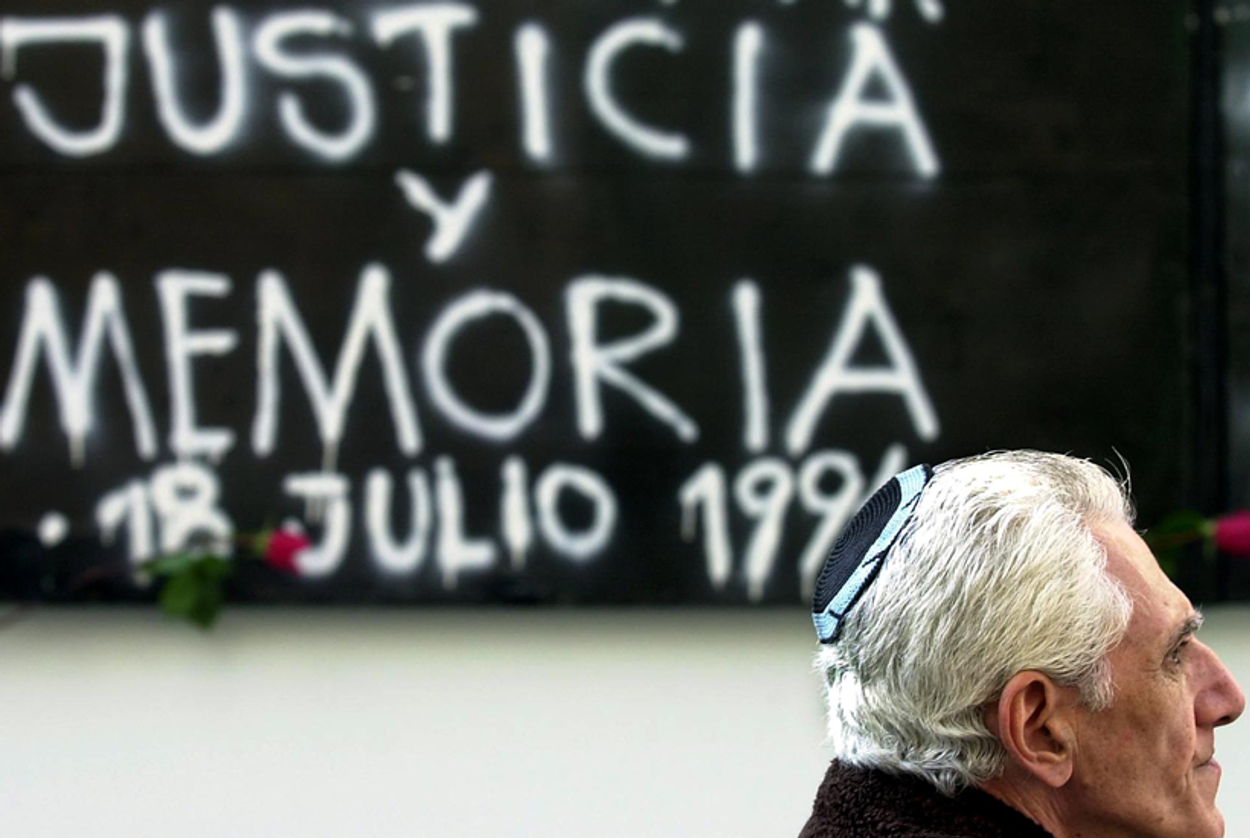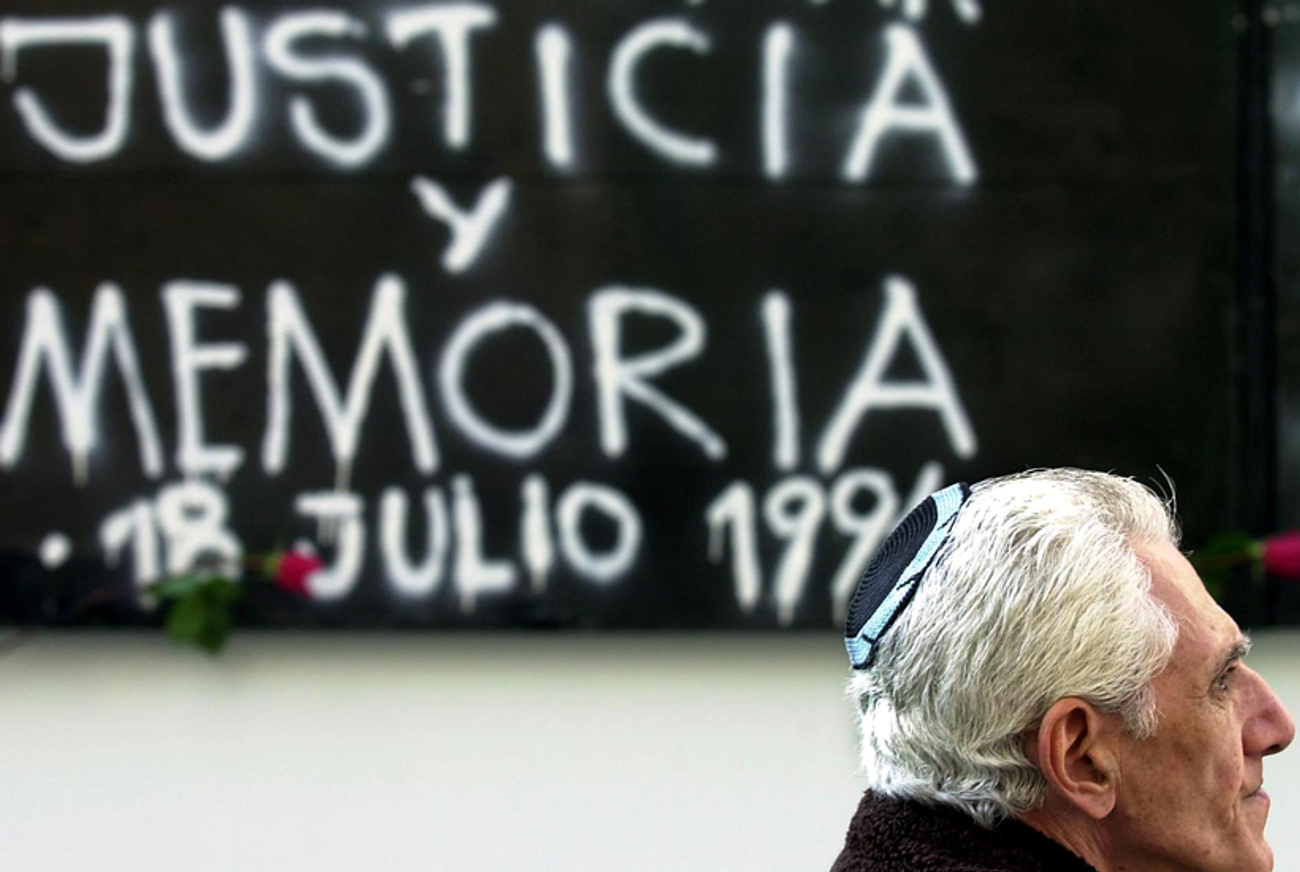The Rafsanjani Connection: What Did Nisman Know?
The 1994 Buenos Aires Jewish community center bombing and Iran’s influence in Latin America




A few minutes before 10 o’clock on the morning of July 18, 1994, an enormous bomb ripped through the headquarters of the Asociación Mutual Israelita Argentina (AMIA) in Buenos Aires, killing 85 people and wounding more than 300. The bloodshed that day, at a community center whose principal offense was to provide educational and recreational facilities to local Jews, established the AMIA bombing as the deadliest terrorist attack ever to take place on Latin American soil.
As Argentina prepares to mark the 15th anniversary of the AMIA bombing, none of the suspects behind the atrocity have even been apprehended, let alone seen the inside of a courtroom. For a good 12 years, Argentina’s efforts to investigate the bombing were marred by incompetence, corruption, and political intrigue. Only now, with a determined prosecutor on the case, is some kind of clarity emerging.
The different investigative threads that have been untangled point compellingly towards Iran’s clerical rulers and to one man in particular—Ali Akbar Hashemi Rafsanjani. Latterly touted as a potential kingmaker among the Tehran regime’s shrewder elements, and regarded by some Western diplomats as a far more preferable interlocutor than the brutish Mahmoud Ahmadinejad, Rafsanjani just happened to be the President of Iran on that fateful morning in Buenos Aires.
Like the first World Trade Center bombing in 1993, or the bombing of the U.S. Embassy in Nairobi in 1998, the AMIA bombing is a reminder that the world that emerged after the September 11 attacks is not entirely dissimilar from the one that preceded it. True, in the annals of human cruelty, the 1990s will be remembered more for the genocides in Rwanda and Bosnia than for terrorism, but random, deadly assaults upon unsuspecting citizens going about their ordinary business were hardly unheard of.
While groups like the Irish Republican Army and the Basque separatist organization Euskadi Ta Askatasuna were capable of ugly carnage, the truly spectacular attacks, then as now, emanated from Middle Eastern groups. Photographs of the aftermath of the AMIA bombing—the building reduced to a scarred shell, the mountain of rubble, the grief-stricken expressions of eyewitnesses stunned by its sheer scale—conjure up memories of an earlier atrocity, the bombing of the U.S. Marine Barracks in Beirut in 1983. That is not coincidental.
The Beirut attack, in which more than 350 people lost their lives, was carried out by a group that quickly morphed into Hezbollah, the Lebanese outpost of the Iranian revolution. The senior Hezbollah operative behind that attack, Imad Mughniyeh, was also alleged to have played a critical role in both the 1992 bombing of the Israeli Embassy in Buenos Aires and the even deadlier AMIA attack two years later.
By the time Mughniyeh was killed in 2008, by a car bomb in Damascus predictably blamed on the Israelis (as befits a man with such a fearsome reputation, there were many in the Arab world who wanted him dead), the warrant for his arrest issued by the Argentinian authorities was nearly two years old. Along with Mughniyeh, the Argentinians were also demanding the arrest of eight leading Iranians, including Mohsen Rezaei, one of the four approved candidates in the recent presidential elections, and former President Rafsanjani, who has skilfully rebranded himself as an Iranian reformer.
The potential consequences of all this are profound. The abiding connections between Iran and Hezbollah—financial support, military supplies, theological and ideological sustenance—span three decades and involve individuals who, given the current fissures within the Iranian regime, are seen as critical to the success of any Western attempts to engage Iran over its nuclear program. Not for the first time, there is an inherent tension between the demands of justice and the imperatives of political expediency.
Even so, the Argentine state prosecutor Alberto Nisman has stuck to the morally healthy principle that if there is enough evidence to link you with a crime, you should stand trial accordingly, irrespective of who you are. According to Nisman, Hezbollah was ordered to carry out the the AMIA bombing by its Iranian paymasters at a meeting in the Iranian city of Mashad in 1993. Among those present at the meeting was then-president Rafsanjani, who is now the subject of one of the several arrest warrants issued by Nisman.
The determination to venture wherever his enquiries take him is what has distinguished Nisman’s approach since 2006, when he took over the discredited AMIA investigation. His predecessor’s efforts, which had dragged on for more than a decade, collapsed amidst evidence of bribery, witness intimidation, and political interference running as high as former Argentinian President Carlos Menem, who was charged by Nisman with having covered up the inolvement of a leading local Syrian businessman in the bombing.
The first sign that the renewed investigation was recovering some credibility came in 2007, when the international law enforcement agency Interpol issued arrest warrants known as “red notices” for six of the nine Iranians fingered by Nisman. Among them was Mohsen Rezaei, the conservative who scraped just under two percent of the vote in the recent elections, and who has remained largely silent in the face of the extraordinary repression which followed the disputed outcome.
Rafsanjani, however, was not on Interpol’s list, raising suspicions that the agency was shying away from a confrontation with the Iranians. After all, it’s difficult to believe, given the structure of decision-making in Iran, that Rezaei, his colleagues and their Hezbollah partners could have elected to carry out the AMIA operation without the approval of Rafsanjani and Supreme Leader Ayatollah Ali Khamenei, whose office controls the Islamic Republic’s foreign and defense policies.
The Iranian connection does not mean that there is no longer a case to pursue within Argentina concerning the bombing or the intrigues which followed it. Last March, for example, there was a vicious attack last March upon an individual who blew the whistle on the compromised pre-Nisman investigation—the letters “AMIA” were carved into his back by assailants who told him to “stop fucking” with the Argentinian security service. More recently, Jorge Palacios, an officer widely suspected of involvement in the cover-up, was appointed head of the Buenos Aires police. The local dimensions of the investigation remain, to say the least, rather murky.
Yet there needs to be, as Alberto Nisman has demonstrated, a distinction between those who are responsible for the bombing and those who colluded in covering up that responsibility. Therein lies the significance of Interpol’s endorsement of the Iranian connection, even if the agency is not as convinced as Nisman is that the trail stretches as high as Rafsanjani.
Tellingly, the Iranians resorted to their usual bombast in denying involvement with the AMIA bombing, rather than supply any actual evidence which might contradict Nisman’s claims. Refusing Argentina’s extradition request for Rafsanjani and the other Iranians, Tehran accused Interpol of “succumbing to the Zionist regime.”
Ironically, if the Iranian swipes against said Zionist regime are based on conspiracy theory, Western fears that Latin America may itself succumb to the Islamist regime are more solidly grounded. In January, defense secretary Robert Gates told the Senate Armed Services Committee that Iranian activities on the continent worried him a great deal more than Russia’s latest efforts to curry favor there. The formation of a cluster of anti-American governments in countries like Bolivia, Nicaragua and, especially, Venezuela—whose demagogic leader Hugo Chavez was the first foreign leader to congratulate Ahmadinejad on his recent election “victory”—has provided the Iranians, for the first time, with a sphere of influence outside the Islamic world.
Which is why, for all the weaknesses within the Iranian regime unveiled by the recent wave of protests, it remains hard to foresee the day when Rafsanjani will enter a Buenos Aires court to answer the charges brought by Nisman. But even if the suspects are never brought to justice, Nisman will still have performed a valuable service in issuing the warrants. Anyone who thinks that Iranian intransigence begins and ends with Ahmadinejad will need to explain why it’s Rafsanjani who can more justifiably be described as an outlaw. Because the ultimate lesson of the AMIA atrocity is, perhaps, simply this: that what unites the different characters who shape Iranian politics—the preservation of the Islamic Republic, the desire for external influence, the compulsive drive towards nuclear weapons, the readiness to support truly murderous groups who will operate anywhere—is more important than what divides them.
***
Like this article? Sign up for our Daily Digest to get Tablet Magazine’s new content in your inbox each morning.
Ben Cohen, a former BBC producer, is a writer based in New York who publishes frequently on Jewish and international affairs. His Twitter feed is @BenCohenOpinion.
Ben Cohen, a former BBC producer, is a writer based in New York who publishes frequently on Jewish and international affairs. His Twitter feed is @BenCohenOpinion.